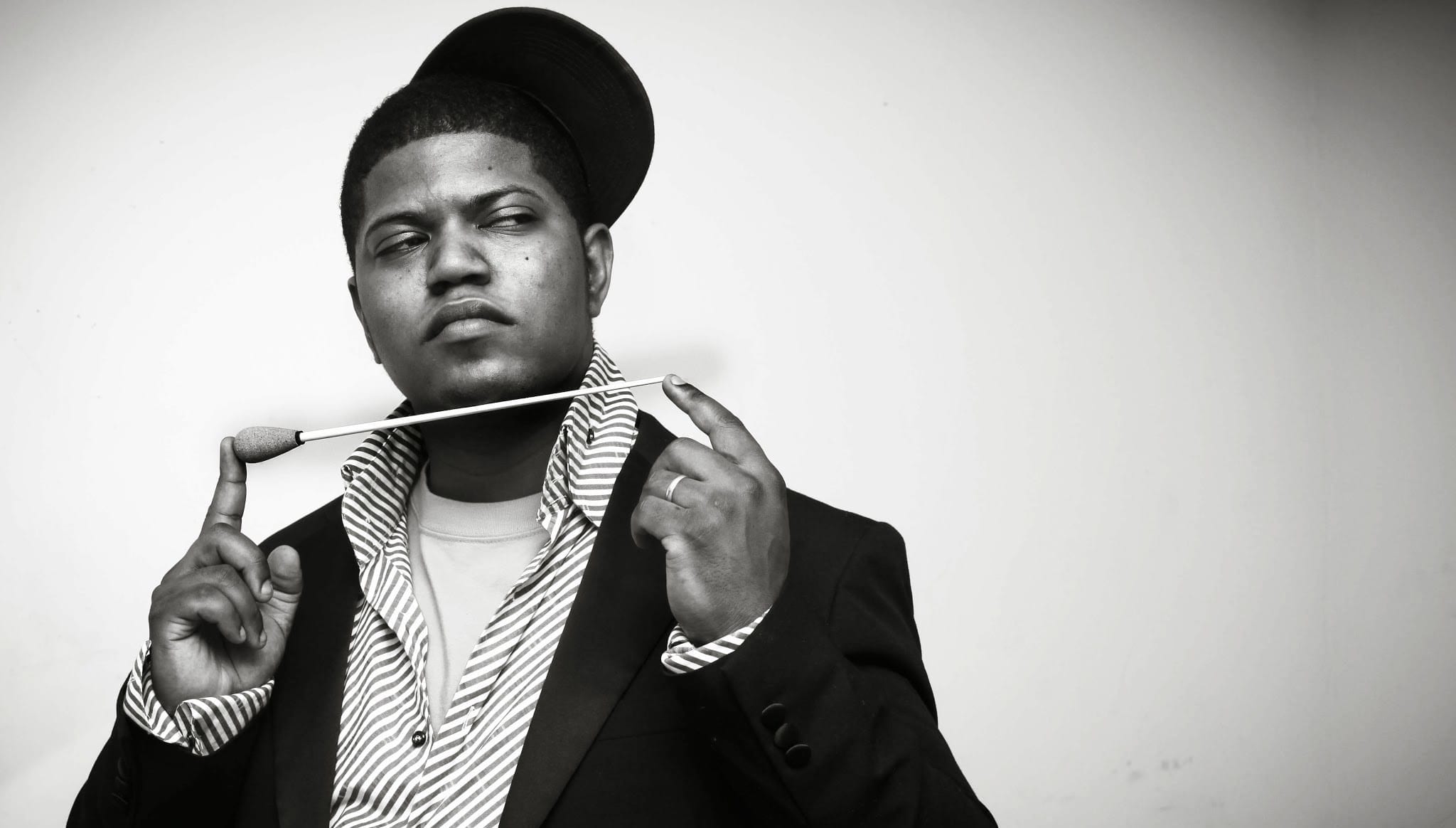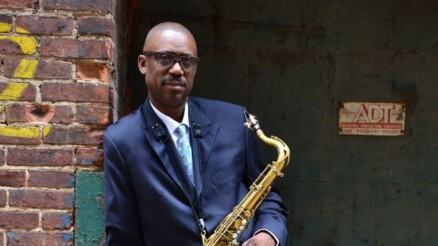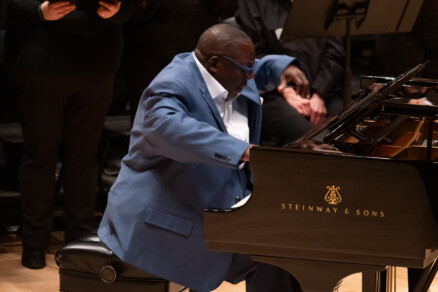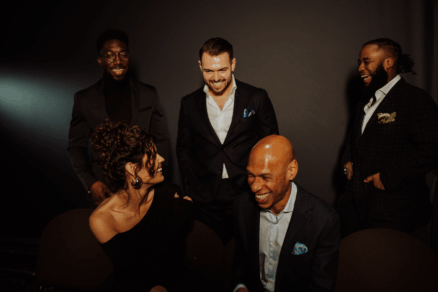Sam Prather’s Groove Orchestra brings jazz and bedroom production together into a danceable new sound

We are in the Information Age, when an education resides at our fingertips. It can be overwhelming—but there’s a few creative people who can use technology to help organize the swarm of ideas already in their heads. The jazz legends Herbie Hancock and Quincy Jones were two of the first to use computers to create digital symphonies. Over time, this technology became more accessible, and a new generation of musicians became bedroom producers.
Sam Prather’s Groove Orchestra, which performs this Saturday at Bohemian Caverns, pulls together a large cast of local musicians: They simply play their instruments, but Prather—a multi-instrumentalist doubling on piano and drums—takes on writing, editing and mixing the various components of his pieces. This may seem cumbersome in a world where the most high-profile albums are made by a production team of engineers, producers and songwriters. But a spirit of exploration and diligence imbues Prather’s album, GO!, released earlier this year. It’s perhaps the first by a D.C. musician to combine the social atmosphere and vibrant synergy of making an album with friends with the intimate focus of a bedroom producer’s work.
“Getting guys like Elijah [Jamal] Balbed, Kris Funn, Carroll [“C.V.”] Dashiell [III], and Samir Moulay in the studio at the same time, plus rehearsals, it’s asking a lot. So I definitely had to string things together,” Prather says. That “stringing together” involved recording most parts separately, then sitting at a computer and copying and pasting the audio files. He used the knobs of a soundboard to organize all those sounds into his Groove Orchestra concept.
“I came to the musicians with these tracks for them to record their parts over,” Prather remembers. “After listening, they were wondering, ‘What do you need me for?’” He needed their individual sounds to give his computerized compositions a breath of familiarity.
Despite his role as band leader, Prather’s playing and production on the album are almost always in support of either a lead vocalist or another instrumentalist. It’s the type of support an organist gives to the choir in a church, keeping close to its pace. And it was in church that Prather began to play drums, while also receiving formal training on piano. His musical explorations swung into gear at Woodrow Wilson High School, where he joined the jazz orchestra and school choir. While in high school, he had the opportunity to receive a lesson from the local piano luminary Allyn Johnson. He was struck by Johnson’s keen ability to listen to someone else’s playing and pinpoint exactly what they needed to work on. He decided to attend UDC, where Johnson is the director of jazz studies. While earning his bachelor’s degree, Prather began to immerse himself in the local jazz scene, going to jam sessions and getting his first sideman gigs.
Prather says that attending Howard University for graduate school was his most important step toward building a network. There he got a chance to perform with masters like Pharaoh Sanders, Larry Willis and Greg Osby. All the musicians on GO! attended Howard, with the exception of Moulay, the guitarist. Prather began working on the album while studying there (he graduated in 2012 with a master’s in jazz performance).
The project started with the song “Uncontainable,” the only track on the album that is played through live, from beginning to end. During solos, Sam pulls the rhythm section’s shuffling hip-hop groove into a slower breakdown, then transitions to a double-time mambo for a few exciting, fleeting moments. From the very first tune, Prather was clearly experimenting with the limits of a groove-based song. That suite of quickly shifting textures was the model, at least until Prather heard a big band chart he’d written performed by Howard’s jazz orchestra for the first time.
Sam says it was Chris Royal, the composition teacher at Howard, who taught him which instruments sound better on the top of which orchestration, and how to get different harmonic colors from different sectional movements. It’s the type of orchestral thinking that Tchaikovsky would use when he built up an incandescent theme with the strings, then used the horns to fill your belly with vibration. But with the Groove Orchestra, Prather had no symphonic orchestra at his disposal, so he did the next best thing and synthesized his own sounds. One digital sound may capture the breath of a human voice, while another conjures a ringing bell’s tone over a saw-like rumble, reminiscent of a distorted guitar. Using that same formula, he created dozens of sounds and mixed and matched them to his liking, creating an orchestra of his own inventions.
GO! features a wide variety of groove bases. You can hear the influence of a wide variety of classic, popular music that Prather used to develop his own sound. The opening and closing tracks both come out the school of James Brown, each with its own unique twist that you can’t exactly put your finger on. Prather says some of his biggest influences were the drummers of the early R&B era. “When you listen to Chuck Berry’s ‘Johnny B. Goode,’ a lot of drummers would hear the guitar line and play the same rhythm, but actually the drummer is swinging against Chuck’s straight feel. That’s what creates the type of tension I was going for with this album.”
He uses that same tension with vocal features. For instance, on the track “Time Flies,” vocalist Micah Smith delays his vocal inflictions until after the initial attack of the J Dilla-inspired drum hits. Prather garnishes that eclectic drum sound with shimmering cymbal rolls that abruptly choke into silence after a series of fluid break beats on the bass drum and snare.
The tension and release isn’t confined to his drum programming. On the classic “Never Will I Marry,” popularized by Nancy Wilson, Pratherfeatures the vocalist Shacara Roberts,who leads with propelling vocal sections loosely floating over a swinging groove and sparse percussive work—then suddenly a walking bass line starts up, while Roberts carries on. Prather’s synthesized horns bounce against the vocal lead, and in climactic Count Basie fashion they build up sonic fortitude only to collapse. Then an unobtrusively powerful bass sound enters the soundscape, and you are reminded that we are in the 21st century, when 808’s rule the airwaves. In one digital arrangement Prather has exhibited three generations of musical styles; the vocalist has been the one constant giving direction to the sonic possibilities.
Prather’s Groove Orchestra is a testimony to his lengthy years of study and practice. He tackles all duties of keyboard, drum programming, mixing and executive production, the product of 10 years of digital audio exploration. He says the engineer who finalized the mixing and mastering could only add so much to Prather’s own expansive groundwork. Citing influences like Maze & Frankie Beverly, Michael Jackson, Parliament, James Brown, Stevie Wonder and the band at his church, led by Darrell Owens, he had a lot of inspiration to draw from.
“I have a personal goal and a broader goal,” Prather says of the Groove Orchestra. “I want to expose as broadly as I can the talents of the people in this area. A lot of them don’t get that front-stage exposure that they would get in New York or LA. Another goal is to bring the accessibility back to jazz, without compromising on a harmonic level. I might be getting myself in trouble, but there’s a different type of music getting a lot of attention and it’s not jazz, like Robert Glasper and Snarky Puppy. I want to solidify what that type of music is.”
He adds: “I want to play groove-oriented stuff that draws from my influence but doesn’t pull away creativity for the sake of album sales…. D.C. has a lot of music to offer, and there won’t be a bright future for music with cats going to New York for $20 gigs.”
DC, DC jazz, Groove Orchestra, hip-hop, J Dilla, jazz, jazz and hip-hop, Sam Prather, Washington




